To excel in public relations, you need to prioritize building strong relationships with your audience and media. Start by developing a clear strategy based on thorough market research. Set SMART goals to measure your progress effectively. Engage with your target audiences through compelling content and social media channels. Transparency is key—always communicate openly and own up to mistakes to build trust. Additionally, consistently monitor your performance using KPIs to adjust your approach as needed. By following these best practices, you can enhance your brand’s reputation and connection with the public, while uncovering more strategies along the way.
Introduction to Public Relations

Public relations is all about managing your company’s image and building connections with your audience.
It’s essential for creating a positive reputation and standing out in a crowded market. Effective PR strategies help nurture relationships with key stakeholders and enhance brand visibility through strategic communication.
Definition and Importance
In the realm of business, effective public relations (PR) strategies serve as a crucial foundation for building and maintaining a positive reputation. Understanding the importance of public relations is essential for any organization aiming to connect with its audience. A comprehensive PR strategy enables you to build trust with the public and enhance your public image.
Here’s how effective public relations can impact your brand:
| Benefits of PR | Impact on Business |
|---|---|
| Builds Trust | Fosters loyalty and customer retention |
| Enhances Public Image | Attracts new customers and partners |
| Manages Crisis | Protects brand reputation in turmoil |
| Improves Public Perception | Positions brand favorably in the market |
Successful public relations isn’t just about promoting products; it’s a strategic communication strategy that nurtures relationships with stakeholders and the media. By actively engaging in effective public relations, you’re not just reacting to situations, but proactively shaping public perception. In today’s fast-paced environment, understanding and implementing strategic PR is more important than ever for sustainable growth and success.
Developing a PR Strategy

When you’re developing a PR strategy, start with thorough research and analysis to understand your market landscape, including audience identification and segmentation to ensure targeted outreach.
Next, set clear objectives that align with your business goals, ensuring every effort contributes to your vision, utilizing SMART goals for clarity and measurement.
Research and Analysis
Understanding your organization’s unique position in the market is crucial for developing an effective PR strategy. To create a solid strategy, public relations professionals must engage in thorough research and analysis. This includes examining internal PR practices, market conditions, and competitor strategies. By doing so, you can tailor your public relations tactics to resonate with your target audience.
Here’s a snapshot of the key components for conducting effective research and analysis:
| Component | Purpose | Tools/Methods |
|---|---|---|
| Internal Analysis | Assess current PR efforts and strengths | Surveys, Internal Reports |
| Market Conditions | Understand external influences and trends | Market Research, Industry Reports |
| Competitor Strategies | Identify strengths and weaknesses in competitors | SWOT Analysis, Media Monitoring |
| Media Landscape | Determine the best channels for outreach | Social Media Analytics, News Monitoring |
Utilizing these insights helps you adapt to the ever-changing media landscape and ensures your PR campaigns are data-driven and effective. By focusing on research and analysis, you’ll enhance your ability to communicate clearly and effectively with stakeholders.
Setting Clear Objectives
Effective public relations strategies hinge on setting clear objectives that guide your initiatives. To create a PR strategy that truly works, you need to define specific, measurable, achievable, relevant, and time-bound (SMART) goals. This approach ensures your public relations efforts align with your overall business objectives.
A solid PR strategy requires clarity on what you want to achieve—be it brand awareness, reputation management, or crisis mitigation.
Setting clear objectives not only informs your actions but also helps you measure success. For instance, if your goal is to increase media coverage by 30% in six months, you can track progress easily.
A comprehensive PR strategy is essential for prioritizing tasks and allocating resources effectively.
Identifying Target Audiences
Identifying target audiences is crucial to the success of your PR campaigns, as it allows you to tailor your messages and strategies effectively. By pinpointing key audience segments, you can develop relations strategies that resonate with them, ensuring your public and media relations efforts yield optimal results.
Understanding your target audiences enables you to craft an effective PR strategy that engages and influences their perceptions.
To enhance your media relations strategy, start by researching demographics, interests, and behaviors of your audiences. This insight will guide your PR activities, helping you create content that speaks directly to their needs.
Reach out to media that cater to these segments, building relationships that amplify your message.
Additionally, leverage community relations by engaging with local influencers and organizations, which can further extend your reach.
Collaborating with PR experts can also provide fresh perspectives and best practices for public engagement.
Ultimately, knowing your target audiences not only elevates your brand reputation but also fosters long-term success by cultivating trust and loyalty.
Focus on these elements, and watch your PR efforts flourish.
Execution of PR Tactics

Now that you’ve laid the groundwork with your PR strategy, it’s time to put those plans into action through effective execution of PR tactics.
You’ll want to focus on building strong media relations, leveraging digital and social media, and engaging with your community through events. Each of these areas plays a crucial role in amplifying your message and connecting with your audience.
Additionally, identifying your target audience and aligning your media outreach with their interests can significantly enhance engagement and credibility, as outlined in media relations strategy.
Media Relations and Coverage
Building strong relationships with the media is crucial for enhancing your brand’s visibility and credibility. By connecting with journalists and media outlets, you can secure valuable media mentions that elevate your brand’s reputation. A well-crafted PR strategy helps you leverage these relationships, whether through traditional PR tactics or digital PR efforts.
Developing positive community relations also fosters trust, allowing you to engage effectively with both local and national media. Here’s a simple table to keep in mind:
| Media Relations | Benefits |
|---|---|
| Build media contacts | Increased media mentions |
| Engage with journalists | Enhanced credibility |
| Utilize social media | Improved social media engagement |
| Craft compelling stories | Better audience connection |
Digital and Social Media Strategies
Digital and social media strategies are vital for executing effective PR tactics that directly engage your audience. As you craft your PR strategy in 2024, focus on leveraging digital platforms to reach your target demographic.
A robust social media strategy will help amplify your media content and enhance your public relations campaigns.
PR specialists should prioritize owned media, like your company’s blog and social profiles, to maintain control over messaging and build a loyal following. Engaging content is key, so consider incorporating visuals and interactive elements that resonate with your audience.
One of the best ways to enhance your reach is by collaborating with influencers or utilizing user-generated content. This not only fosters community but also taps into diverse audiences.
Don’t forget the importance of reaching out to media; maintaining solid relationships with journalists can lead to valuable earned media opportunities.
Event Management and Community Involvement
Organizing events and engaging in community involvement can significantly enhance your PR efforts and strengthen your brand’s local presence.
By focusing on event management, you can foster community relations that lead to the success of your PR tactics. Here are three key strategies to consider:
- Create Meaningful Events: Plan events that resonate with your audience and align with your brand values. This not only helps you influence public perception but also builds trust within the community.
- Leverage Different Media: Promote your events through various social media channels and traditional media outlets. This multi-channel approach ensures maximum visibility and engagement, enhancing your overall PR strategy.
- Engage with Local Partners: Collaborate with local businesses and influencers to reach a wider audience. These partnerships can amplify your message and create a sense of community ownership, further solidifying your brand’s reputation.
Monitoring and Measuring PR Success

To truly understand your PR efforts, you need to track key performance indicators (KPIs) that matter.
This data not only helps you gauge your success but also reveals where you can adjust your strategies for better outcomes.
Key Performance Indicators (KPIs)
Measuring the success of your PR campaigns hinges on the right Key Performance Indicators (KPIs).
These metrics help you evaluate your PR tactics and refine your strategy to achieve the best PR results. By focusing on specific KPIs, you can effectively assess the impact of your public relations efforts across different types of media.
Here are three essential KPIs to track:
- Media Coverage: Monitor the number of media mentions and the quality of coverage. This helps you understand how well your messages resonate with a strong public and identify potential PR agencies to collaborate with.
- Audience Engagement: Evaluate the engagement metrics on your PR tools, such as likes, shares, and comments across social media platforms. This indicates how effectively your message is reaching and impacting your target audience.
- Brand Sentiment: Analyze audience sentiment towards your brand to gauge the effectiveness of your PR strategy. Positive sentiment reflects successful outreach and messaging.
Adjusting PR Strategies
Adjusting your PR strategies is crucial for ensuring continued success in an ever-evolving media landscape. By closely monitoring performance data and gathering feedback, you can refine your approach to better connect with your target audience. This process often involves analyzing how well your product or service is received and identifying areas for improvement.
When you create your PR solutions, don’t forget that PR is also about building relationships with journalists and media outlets. A new PR strategy may include outreach efforts or collaborations that can enhance your brand visibility. Regularly assess your engagement metrics to determine which tactics resonate most with your audience.
Adjusting PR strategies means being agile and responsive to the feedback you receive. If certain campaigns aren’t generating the expected results, it might be time to pivot. Incorporate insights from performance data to inform your next steps, ensuring that your efforts align with audience preferences and market trends.
Ultimately, a proactive approach to adjusting PR strategies will help you maintain a positive brand reputation and achieve long-term success in a competitive environment.
Best Practices and Ethical Considerations

In public relations, transparency and accountability are crucial for building trust with your audience.
When crisis hits, your ability to manage communication effectively can make or break your reputation.
Transparency and Accountability
Transparency and accountability are cornerstones of effective public relations, shaping how your audience perceives your brand. In the fast-paced PR world, maintaining openness is crucial, as it builds trust and fosters long-term relationships.
Here are three best practices to ensure transparency and accountability in your PR efforts:
- Communicate Clearly: Always provide straightforward and honest information. Whether it’s a press release or a social media post, clarity helps your audience understand your message without confusion.
- Own Your Actions: If mistakes occur, address them promptly. Acknowledging errors shows integrity and can prevent a PR fire from escalating.
Every PR professional knows that accountability can turn a negative situation into a demonstration of your commitment to your audience.
- Engage Regularly: Keep the lines of communication open. Regular updates on your initiatives, successes, and challenges allow your audience to feel included in your brand’s journey.
This engagement is essential in the type of PR that builds lasting connections.
Crisis Management
Crisis management is a vital component of public relations that requires a strategic approach to protect your brand’s reputation during challenging times. When a crisis arises, it’s crucial to respond swiftly and transparently. This means acknowledging the issue and providing clear information to your stakeholders.
Here’s a quick overview of best practices and ethical considerations in crisis management:
| Best Practices | Ethical Considerations |
|---|---|
| Develop a crisis plan | Maintain transparency |
| Train your spokesperson | Prioritize public interest |
| Monitor media coverage | Avoid misinformation |
| Engage with stakeholders | Respect confidentiality |
| Evaluate and adjust strategy | Foster trust and credibility |
Conclusion
In conclusion, mastering public relations is key to your brand’s success. By developing a solid PR strategy, executing effective tactics, and continuously monitoring your efforts, you can enhance your brand’s reputation and engage your audience. Always prioritize transparency and ethical considerations to build trust within your community. Embrace these best practices, and you’ll not only navigate challenges but also position your brand for long-term growth and meaningful connections in a competitive landscape.


